Buffalo Springfield's "Last Time Around" by Harvey Kubernik
Buffalo Springfield's "Last Time Around" by Harvey Kubernik
Copyright 2022
- 50th Anniversary of Crosby, Stills, Nash & Young's "Deja Vu"
- 50th Anniversary of Neil Young's "After The Gold Rush"
- REVIEW: "WHAT'S THAT SOUND? Buffalo Springfield Box
"Jack Nitzsche the arranger and keyboardist called me to play keyboard on some dates in 1967 at Sunset Sound. Bruce Botnick was the engineer," recalled keyboardist and arranger Don Randi to me in a 2015 interview.
"When I walked into the studio I didn’t realize it was for Buffalo Springfield. I thought it was for a Neil Young album, ’cause that is what he was supposed to be breaking away from and going on his own. Hal Blaine and Jim Horn are on the track. I played piano and organ.
"When Jack and Neil asked me to play on the end part of 'Broken Arrow' they were both waving me on to keep playing. I kept lookin’ up at them, ‘Are you ever gonna tell me to stop?’
"I’m on 'Expecting to Fly' with Russ Titelman, Carol Kaye and Jim Gordon. I had some little head chart arrangement to work from and another of the tunes might have been sketched. It was pretty wide open with the chord changes. And all you had to do was hear Neil sing it down with an acoustic guitar and you sat there, 'Oh my goodness.'
"Neil wrote cinematically and Jack arranged his own records cinematically. He did movie scores with me as early as 1965. I loved Neil’s music. This guy’s writing… I thought everybody and their mother was gonna try and start doing his songs. I knew he was a songwriter. Some of the tunes were movies. They were scripts. You have to realize that as great as a musician and as great as a songwriter he is, Neil would also realize talent himself. Neil liked to experiment. Neil was smart enough to know what he wanted and knew how to get it."
"When I did film scores and started to bring in exotic instruments," underlined Jack Nitzsche in a 1998 interview we did for "Goldmine," magazine, "I wanted to make the sound different and wanted room to experiment."
The end of October 1967 saw the release of their second album, Buffalo Springfield Again, their legacy guaranteed with iconic readings of Young’s “Mr. Soul,” and Stills’ “Rock ‘n’ Roll Woman,” and “Blue Bird.” Taking over the production chores, these two ambitious young guns finally corralled that layered, textured sheath of sound - stacks of guitar tracks arrayed like a tasty parfait - which came to define an entire musical genre.
It's one of my favorite albums.
Buffalo Springfield Again was a defining moment in L.A. music history; like Brian Wilson before them, the Springfield meshed song craft with new recording techniques, elevating the music to a rarefied state of eloquence. If not the paradigm-shift of Sgt. Pepper,’s, the record furthered the claim by a cohort of young talents that the artists themselves were fit for command. Stills and Young would see their captaincies awarded in very short order.
"We were always comfortable singing someone else’s song early on," underscored Richie Furay in a 2000 interview we conducted for "Goldmine" magazine.
"The first album and some of the second, you can hear the cohesiveness
was a group effort, there was not the possessiveness of ‘this is my
song, ‘this is my baby, ‘I’m singing it because I wrote it.’ The
individual members brought their own take on what was being presented to
the song. We liked the Beatles with John and Paul singing harmony.
Stephen and I did a lot of that unison singing. That we picked up from
the Beatles but then there was a lot of experimentation."
Buffalo Springfield Again Side acetate label-1968
(Courtesy of Jeff Gold and Record Mecca)
Before playing its final show on May 5, 1968 at the Long Beach Sports Arena in Southern California, Buffalo Springfield released three studio albums on ATCO during an intense, two-year creative burst.
Those albums - Buffalo Springfield, Buffalo Springfield Again, and Last Time Around - have been remastered from the original analog tapes under the auspices of Neil Young for the boxed set: WHAT'S THAT SOUND? THE COMPLETE ALBUMS COLLECTION.
Chris Darrow: (Musician): By 1968, they had a number of hits with Still’s ‘Bluebird’ and ‘Rock and Roll Woman’ and Neil Young’s ‘Mr. Soul,’ as well as ‘Expecting to Fly’ and ‘Broken Arrow.’ The band had some tension among the members, both personally and musically, and began to go in opposite directions. I went to their final concert on May 5, 1968 at the Sports Arena in Long Beach. The set was long and intense and ended with a long 20 plus minute version of ‘Bluebird.’Country Joe and the Fish and Canned Heat were also on the bill.”
Rodney Bingenheimer (Deejay): I went to Buffalo Springfield’s last concert in Long Beach. Neil was back in the band. I really liked drummer Dewey Martin and at the gig he dedicated ‘Good Time Boy’ to me. I was on the side of the stage and it was the best time I ever heard the group live. I was really sad when the band broke up. I was bummed out when I heard Buffalo Springfield was ending.”
Rick Rosas: (Musician) Mark Guerrero and went to the goodbye concert in Long Beach. It was pretty heavy. I was so young. It was really good. Some of the guitars were out of tune.”
Mark Guerrero (Musician): I saw the Buffalo Springfield’s farewell performance at the Long Beach Sports Arena May 5, 1968. It was a great show with one of its highlights being a hot version of ‘Uno Mundo,’ but it was sad to know it was the end of the road for the band.”
Denny Bruce: (Record producer/manager): I went to the last Buffalo Springfield concert in Long Beach. Neil [Young], Jack [Nitzsche] and I had a limo. Jimmy Messina came home with us. His head down and crying, ‘I can’t believe it’s over.’ It was a sense of relief for Neil. He was glad it was over.”
On July 30, 1968, Last Time Around, a posthumous album by Buffalo Springfield materialized. Besides supplying bass on the LP, Jim Messina served as engineer and producer. He had earlier assisted Young in assembling “Broken Arrow” and engineered Stills’ “Rock and Roll Woman” for Buffalo Springfield Again.
By Last Time Around, Neil Young was faintly involved with the band and had apparently split their group scene for good. But not before providing “I Am a Child” and “On the Way Home.”
Richie Furay: "Neil
could not see himself as second fiddle. He couldn’t and wouldn’t see
himself as just a member of the band, one of the five guys," Richie told
me in a 2000 interview subsequently published in my 2009 book "Canyon
of Dreams: The Magic and the Music of Laurel Canyon."
Pete Johnson in The Los Angeles Times praised the platter: “Within the Springfield were three of the best pop songwriters, singers, and guitarists to be found in any American rock group. I have never seen a group use three guitars as tastefully as they do, weaving a finely detailed fabric whose pattern never blurred from overlapping.”
Barry Gifford from Rolling Stone hailed the album. “The most beautiful record they’ve ever made. Too bad this isn’t the first time around.” Ellen Sander, writing in The New York Times, observed, “The group has always manifested its multitude of talents in straightforward, professional songs, flavored with lithe, sweet country sounds. They have made an art out of music that is unfailingly pleasant; no less moving for its tasteful, understated neatness. Their final album, Last Time Around, is no exception. The entire album has a fresh, natural feeling about it, not unlike a soft summer rain.” In my 2016 book on Neil Young "Heart of Gold," I asked several friends about this wonderful album. During 1967 we were enthralled by the delicious "Buffalo Springfield Again." The unexpected surprise of "Last Time Around," issued after the group disbanded, was a sad but fruitful dessert.
Mark Guerrero: Buffalo Springfield’s Last Time Around, was akin to the Beatles White Album in that it was recorded at a time the band was breaking up so many of the songs were not recorded as a band. It was like three solo artists coming in and doing their thing. However, it’s still a really good album with some great songs. Neil Young’s ‘On the Way Home,’ sung by Richie and the acoustic gem I Am a Child; Steven Stills- his bluesy ‘Four Days Gone’ in 3/4 time with his great piano accompaniment; ‘Questions’- one of my favorite Stills songs; ‘Pretty Girl Why’- a kind of Latin jazz song with nice two-part harmony on the choruses; and ‘Uno Mundo’- a Latin-style song with full blown Latin percussion that was later covered by the East L.A. band El Chicano. Richie Furay- the beautiful ‘It’s So Hard To Wait.’”
James Cushing: On Last Time Around, every song has that wonderful thing that the very best later Beatles songs have -- that sense that the musicians know all about many different musical traditions and are not hemmed in or limited by them, but who can use them in a joyous way to discover their own language. Country western, rock, samba, folk, it’s all there.
Neil’s ‘I Am a Child’ is spoken from the perspective of someone going back to and celebrating innocence, but he implies that he now lives in a world in which that innocence has been lost. His off-the-cuff poetry stresses the implication of a situation involving an ‘I’ and a ‘you,’ but we get a sense of those characters through statements in a monologue within a relationship, not through imagery.”
Kirk Silsbee: The Last Time Around album was damn good. Stills' ‘Pretty Girl Why’ showed that the band was capable of being very effective while understating. Sure--Buffalo Springfield could rock hard and play hard but ‘Pretty Girl Why’ points to a level of sophistication and subtlety that was just coming into rock at the time. Nobody had to yell and scream or show how many hot licks they could play in that song. In that regard, it was anticipating the better angels of the coming singer-songwriter genre.
Maybe Neil didn’t sanction that album but look he gave us ‘On The Way Home'; that's just a beautiful song. It was on rotation on our AM and the new FM radio playlists--years after the band was gone. B. Mitchell Reed, in particular, implicitly positioned the Springfield as an important antecedent by programming tracks well into the early 1970s, but in the context of Crosby, Stills & Nash or After the Goldrush.
‘On The Way Home’ is atypical of Neil because it’s an optimistic song. And you don’t get optimistic songs from Neil Young. He deals in dour self-immolation. And it’s Richie Furay at his optimistic, celebratory best. That’s as good as anything they ever did. At the same time you’ve got ‘I Am a Child'--something new as well. Yes, it’s Neil indulging his obsessive self-examination, but he’s also leveling a critique of the music industry and painting himself in a very vulnerable light. In that, it’s a window into the future solo Neil Young: you hear similar sentiments on the first Neil Young album in ‘Last Train To Tulsa.’ The lyrics on both tunes are from a supine point of view.
On the front cover of Last Time Around, Neil is looking away from the other group members--signifying his continual one-foot-in-and-one-foot-out status in the band.
Neil always asserted his individuality in the Springfield, and probably in his mind, it was time to go; I don’t think he had any compunction or second thoughts.
Last Time Around almost sounded like a different band on every track. So I didn’t have the sense of great ride coming to an end so much as a great band splitting off into different directions.”

Thrasher's Wheat has previously published two highly popular articles by Harvey Kubernik:
- 50th Anniversary of Crosby, Stills, Nash & Young's "Deja Vu"
- 50th Anniversary of Neil Young's "After The Gold Rush"
- REVIEW: "WHAT'S THAT SOUND? Buffalo Springfield Box
(A child of Hollywood, music historian Harvey Kubernik is the author of 20 books, including 2009’s Canyon Of Dreams: The Magic And The Music Of Laurel Canyon and 2014’s Turn Up The Radio! Rock, Pop and Roll In Los Angeles 1956-1972 and 2015’s “Neil Young Heart of Gold.” Sterling/Barnes and Noble in 2018 published Harvey and Kenneth Kubernik’s The Story Of The Band: From Big Pink To The Last Waltz. In 2021 they wrote Jimi Hendrix: Voodoo Child for Sterling/Barnes and Noble.
Otherworld Cottage Industries in 2020 published Harvey’s Docs That Rock, Music That Matters. Kubernik’s writings are in several book anthologies, including, The Rolling Stone Book Of The Beats and Drinking With Bukowski. Harvey wrote the liner notes to the CD re-releases of Carole King’s Tapestry, The Essential Carole King, Allen Ginsberg’s Kaddish, Elvis Presley The ’68 Comeback Special, The Ramones’ End of the Century and Big Brother & the Holding Company Captured Live at The Monterey International Pop Festival.
In 2020, Harvey served as a consultant on the 2-part documentary Laurel Canyon: A Place in Time directed by Alison Ellwood that debuted on the M-G-M/EPIX cable television channel and is airing during August 2022 on EPIX.
Labels: album, buffalo springfield, neil young, review, stephen stills






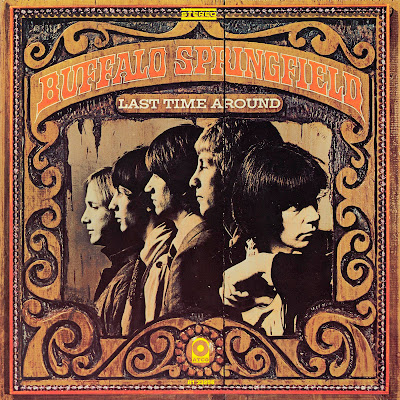































 Human Highway
Human Highway

















 Concert Review of the Moment
Concert Review of the Moment





 This Land is My Land
This Land is My Land

 FREEDOM In A New Year
FREEDOM In A New Year








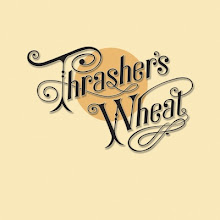
 *Thanks Neil!*
*Thanks Neil!*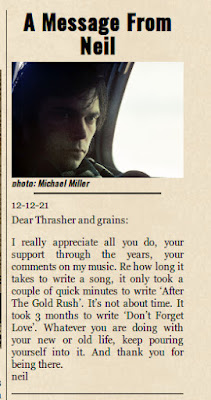




![[EFC Blue Ribbon - Free Speech Online]](http://www.thrasherswheat.org/gifs/free-speech.gif)











 The Unbearable Lightness of Being Neil Young
The Unbearable Lightness of Being Neil Young Pardon My Heart
Pardon My Heart



 "We're The Ones
"We're The Ones  Thanks for Supporting Thrasher's Wheat!
Thanks for Supporting Thrasher's Wheat!




 This blog
This blog 
 (... he didn't kill himself either...)
#AaronDidntKillHimself
(... he didn't kill himself either...)
#AaronDidntKillHimself

















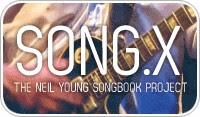





































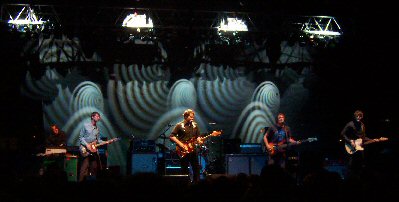

















 Neil Young's Moon Songs
Neil Young's Moon Songs




 Civic Duty Is Not Terrorism
Civic Duty Is Not Terrorism Orwell (and Grandpa) Was Right
Orwell (and Grandpa) Was Right


 What's So Funny About
What's So Funny About 



3 Comments:
"Expecting to Fly" is an amazing song. For many artists, it would have to be a peak. There is a serenity in the end of this relationship, a serenity that cannot fully escape sadness. I do not think any artist in rock history has quite the capacity to evoke these emotions piled on emotions, like a hybrid. Locke once said that we have far more emotions than we have actually named. Expecting to Fly is brilliantly evocative. How many of us have held on for too long? There is sadness and wisdom in knowing how and when to end a relationship. But that brings even more emotion and thought- what might have been, what I could have done? Questions without precise answers, the all too human dilemma.
After writing such a song, and seeing all the potential within it, how could he not move on? Time to leave.
Great insight on E2F Abner. Thanks for sharing.
right, someday ... we all need to fly ... someday
@ Abner : Thanks for your insightful words. I don’t think I could have said it, because I lived it. You nailed it my friend, and you helped me a great deal today. Thanks 🙏
Peace 🙏
Post a Comment
<< Home